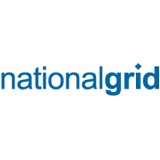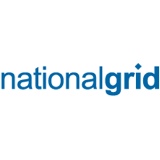Information
-
Document No.
-
Audit Title
-
Client / Site
-
Conducted on
-
Prepared by
-
Location
-
Personnel
Audit Information
-
Transmission Services Gas
UK MDG Transmission Services Gas
Project Health and Safety Inspection Checklist -
To be completed by Project Supervisor or Nominated person weekly from the start of construction work on site. Completed forms are to be kept readily available (preferably on site) for the duration of construction works, after which time shall form part of the CDM Health & Safety file.
-
Contract No:
-
Project Title:
-
Week No.
-
Date
Documentation
-
Any H&S actions identified shall be entered onto Audit/Inspection Action Log and brought to the urgent attention of the appropriate personnel as soon as possible. Contractor/Project Manager to be notified of actions required/taken.
-
S = Satisfactory, U = Unsatisfactory, EW = Early Warning, NA = Not Applicable
-
Have previous audits and inspections of water management been carried out? If so:<br><br>Is the most recent report available?<br>Have the findings been closed out?
-
Has an environmental risk assessment been carried out, covering site location and setting, with respect to local hydrological and hydrogeological conditions?
-
Does the log of Communication with Regulatory Authorities include water management issues?
-
Do Contractor's Method Statements and Risk Assessments consider significant water management aspects / impacts?
-
Has a Water Management Plan been produced? Is the plan sufficient to cover risks identified?
-
How is the Water Management Plan briefed out to staff?
Drainage
-
S = Satisfactory, U = Unsatisfactory, EW = Early Warning, NA = Not Applicable
-
Are current drainage plans available for fixed sites and the site compound?
-
Does the project have knowledge of the drainage system? Are drains colour coded for identification?
-
Is there a method for containing/isolating temporary site compound surface water drainage?
-
What is the disposal route for sewage at the site?
-
Are current interceptor drawings available where applicable?
-
Where appropriate are wheel washing facilities provided, where does wash go?
-
Are interceptor shut-off valves installed?
-
Are all drains and road gullies free from obstruction?
-
When were drains last inspected and / or cleaned?
Training
-
S = Satisfactory, U = Unsatisfactory, EW = Early Warning, NA = Not Applicable
-
Are specific personnel trained for water management (check records and approved copy of procedure)?
-
Is water management included in inductions/toolbox talks?
Pollution
-
S = Satisfactory, U = Unsatisfactory, EW = Early Warning, NA = Not Applicable
-
Are fuel/ chemical storage and refueling activities undertaken with minimal risk to surface and groundwater.
-
Are diesel / oil tanks in sensitive areas or next to a vulnerable receptor (>30m watercourse, >50m borehole)?
-
Is storage and refilling of oil and diesel for mobile plant being carried out within 30 m of watercourses or 50m of a borehole?
-
Has any plant/machinery been located adjacent to surface water drains, ditches or watercourses?
-
Is there any evidence of ground contamination caused by construction activity or re-fuelling?
-
Is pollution control equipment held on site adequate to deal with the potential risks posed by construction activities?
-
Is pollution control equipment and materials easily accessible by relevant personnel (check spill kit contents)?
-
Has the composition of any shot blast being used close to watercourses been approved by the EA / SEPA?
-
Are adequate measures being taken to prevent contamination of watercourses by shot blast?
-
Is shot blast waste cleared up after use?
-
Have all accidental releases and releases not in accordance with discharge consents to watercourses and groundwater been reported to the EA / SEPA and NG’s IMS?
-
Is there any evidence of pollution of watercourses (check Incident Register)?
-
Where monitoring is taking place on private water supplies, is data being reviewed against drinking water standards, and checked for signs of change in quality?
Consents
-
S = Satisfactory, U = Unsatisfactory, EW = Early Warning, NA = Not Applicable
-
Has any work on or close to flood defences been agreed with the EA/SEPA?
-
Is work being carried out in accordance with consents obtained from the EA/SEPA and/or Internal Drainage Boards for watercourse crossings/work within 8 metres of Main Rivers or within a floodplain?
-
Has EA/SEPA consent/approval or exemption been obtained for the methods proposed for: Disposing of water from trenches and excavations/Well pointing/Dewatering deep excavations/ High water tables?
-
Have any other consents or approval been obtained?
-
Has a permit to pump system been established and maintained?
-
Are there any consent conditions placed on the project for water management. Is the project compliant?
Hydrostatic Testing
-
S = Satisfactory, U = Unsatisfactory, EW = Early Warning, NA = Not Applicable
-
What are the proposals for hydrostatic testing?
-
Have the necessary abstraction and discharge consents been obtained?
-
Is the operation being carried out in compliance with consent conditions?
-
Have water analysis reports been provided by an approved testing authority prior to discharge?
-
If mains water is used, has chlorine dissociation been considered and have additives been used (e.g. glycol)? If so, what is the disposal method for the water?
Construction
-
S = Satisfactory, U = Unsatisfactory, EW = Early Warning, NA = Not Applicable
-
What are the bank and bed excavation methods for watercourses? Are the materials stored separately?
-
What are the methods of bed, bank reinstatement and stabilisation details?
-
Has pre-construction drainage been carried out to minimise the effects of construction activities?
-
Can any drainage collect silty water? Check outfalls. Especially relates to installed drainage, ie pre con drainage which may be exposed at the surface on the working width.
-
Are adequate measures being taken to control sediment run-off from the spread/construction site to watercourses?
-
Detail measures implemented.
-
What filtration methods are being used for extracted water?
-
Are watercourses being monitored for evidence of pollution? What records are available?
-
Are operations been carried out in compliance with consent conditions?
-
Have water analysis reports been provided by an approved testing authority prior to discharge?
-
If mains water is used has chlorine dissociation been considered and has additives been used (glycol)?
Signature
-
Auditor's Signature
-
Project Manager's Signature
-
Date








